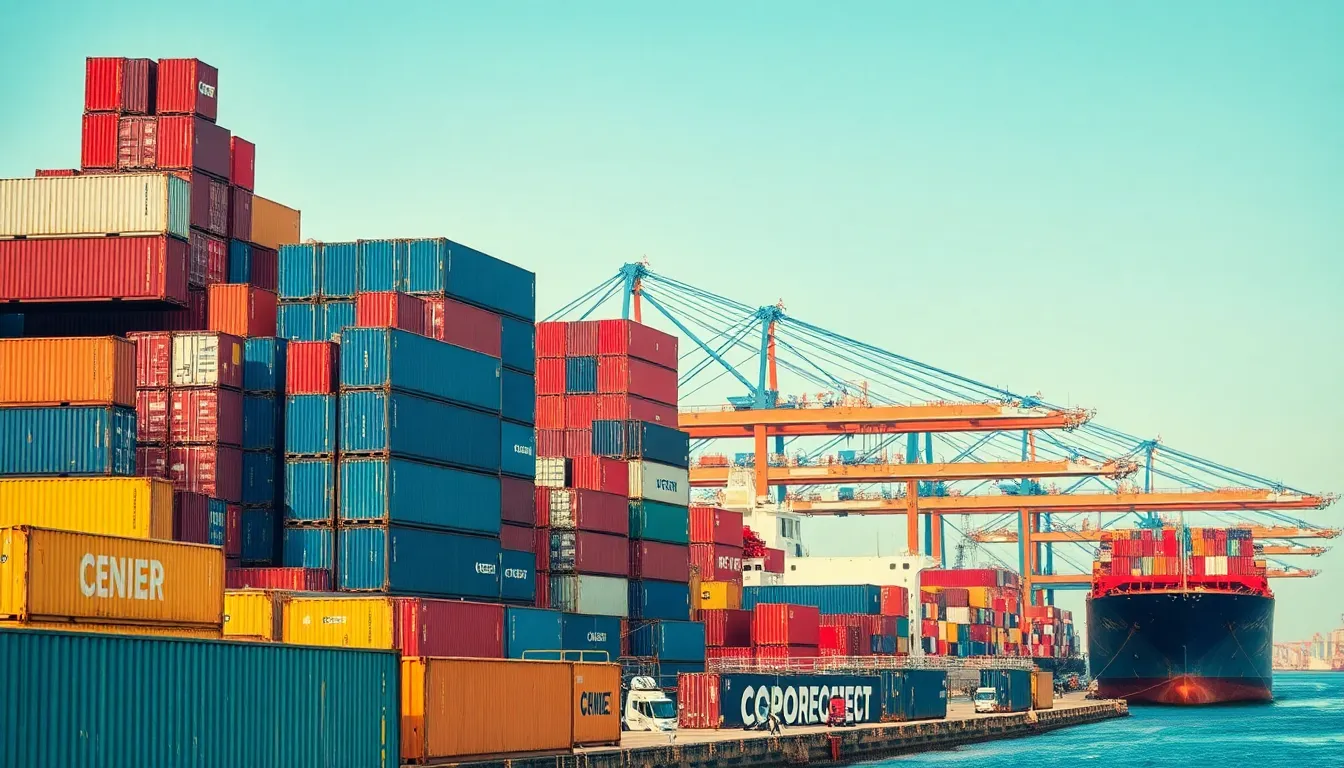In a world where prices seem to rise faster than a cat can knock a glass off a table, tariffs have become the hot topic everyone’s buzzing about. Are they in effect now? Well, grab your favorite snack and settle in, because understanding tariffs is like peeling an onion—there are layers, and sometimes it makes you cry.
Table of Contents
ToggleOverview of Tariffs
Tariffs represent taxes imposed on imported goods, impacting international trade and domestic markets. Current tariffs aim to protect local industries while influencing consumer prices. Numerous countries maintain varying tariff rates, affecting the cost of goods and their availability.
Recent tariffs focus on products like steel and aluminum, aiming to bolster national production. The United States and China have engaged in tariff disputes, escalating pricing on numerous consumer items. For example, electronics, clothing, and materials faced increased costs due to higher import taxes.
Global trade agreements often dictate tariff structures, reflecting the aim of fostering fair competition. Changes in these agreements can lead to immediate adjustments in tariffs and, consequently, market dynamics. A review of recent tariff policies reveals that they often prioritize specific industries over others.
The administration regularly reviews tariff policies to respond to economic shifts. Stakeholders, including manufacturers and consumers, express diverse opinions on the effectiveness of current tariffs. Analyzing tariff impacts requires understanding both the domestic and global economic landscapes.
Policy changes can result in new tariffs or modifications to existing rates, affecting trade relationships. Tracking these developments offers valuable insights into potential price changes in various markets across multiple sectors. Businesses must adapt to these tariff changes to maintain competitiveness and profitability.
Current Tariffs in Effect

Tariffs play a significant role in the current trade landscape, impacting various countries and product categories. Recent shifts in policies have prompted adjustments that affect global trade dynamics.
Key Countries Implementing Tariffs
The United States, China, and the European Union are among the key players implementing tariffs. In 2021, the U.S. reinstated tariffs on Chinese imports, focusing primarily on steel and aluminum to protect domestic industries. China reciprocated with tariffs on U.S. agricultural goods, leading to increased costs for consumers in both nations. The European Union has also adopted tariffs on products such as motorcycles and beverages in response to U.S. trade actions. These tariffs signal ongoing trade tensions and showcase the interplay between manufacturing needs and consumer pricing.
Types of Goods Affected
Numerous goods are impacted by current tariffs. Steel and aluminum products face significant tariffs aimed at bolstering domestic production. Electronics, clothing, and agricultural products also see increased costs due to ongoing trade disputes. For instance, tariffs on imported semiconductors have raised prices for consumer electronics, affecting overall market accessibility. In addition, higher tariffs on select food items disrupt supply chains and inflationary trends. Such implications demonstrate how tariffs influence both availability and pricing in a variety of sectors.
Economic Impact of Tariffs
Tariffs significantly affect both domestic and global markets, influencing prices and trade dynamics.
Effects on Domestic Markets
Tariffs present challenges for domestic markets by increasing the costs of imported goods. Companies facing higher prices often pass these costs to consumers, leading to increased retail prices. Domestic industries may benefit from reduced foreign competition, yet not all sectors gain equally. For instance, while steel producers may enjoy protection, industries reliant on steel suffer from heightened input costs. Consumers experience a narrowing selection of goods, as some foreign products become prohibitively expensive. Trends indicate that sectors heavily reliant on imports, such as electronics and clothing, particularly feel the impact. Local jobs can see fluctuations, as industries adjust their workforce in response to changing market conditions.
Global Trade Implications
Global trade faces significant shifts due to the implementation of tariffs. Countries involved in trade disputes often see retaliatory tariffs that exacerbate tensions and lead to supply chain disruptions. The pricing strategies of multilateral trade agreements become more complex when tariffs are introduced. Importing nations might explore alternative suppliers to circumvent high tariffs, creating rippling effects through the supply chain. Additionally, global competitiveness can be altered, as tariffs protect certain industries while imposing costs on consumers. Developments in international relations frequently impact tariff negotiations, reinforcing the need for ongoing dialogue between nations. As a result, the landscape of global commerce continues to evolve, reflecting the interplay of national interests and economic strategies.
Public Perception of Tariffs
Public perception of tariffs varies widely, with both consumers and industries affected by these economic policies. This section examines these differing viewpoints.
Consumer Opinions
Consumer opinions on tariffs are often mixed. Many individuals express concern about rising prices on essential goods. Increased costs for electronics, clothing, and food products make consumers feel the burden of tariffs directly. Some people recognize that tariffs protect domestic industries; however, the immediate impact on their wallets overshadows that benefit. A survey indicated that approximately 70% of consumers oppose increased tariffs when they lead to higher prices. Others remain unsure, seeing both pros and cons to these economic tools.
Industry Reactions
Industry reactions to tariffs differ greatly across sectors. Manufacturers that rely on imported materials often voice frustration, citing higher production costs. A significant number of businesses in the technology sector, for example, faced increased input costs due to tariffs on electronics parts. Some industries, like steel and aluminum, welcome tariffs, believing they strengthen their market position. Responses also reflect regional factors; sectors in areas with strong manufacturing bases may support tariffs, while others in retail or technology could oppose them. Overall, the divide highlights the complex ecosystem of opinions shaped by tariffs’ varying effects.
Future of Tariffs
Understanding the future of tariffs involves closely monitoring legislative developments and trade dynamics. Recent discussions highlight potential reforms that could reshape tariff structures significantly.
Potential Changes in Legislation
Legislators continuously evaluate existing tariff policies, often driven by economic conditions. Some proposals suggest adjusting or eliminating tariffs on certain goods to stimulate market competition. Others advocate for targeted tariffs, aiming to protect specific domestic industries without broadly increasing consumer prices. Each proposed change reflects a response to economic pressures and stakeholder feedback. As regulatory environments evolve, implementation of these changes could foster a more balanced trade framework.
Predictions for Trade Relations
Trade relations are poised for significant shifts as countries reassess their economic strategies. Analysts predict heightened tensions between major economies, particularly the United States and China, affecting global supply chains. Cooperation might emerge through new trade agreements, fostering decreased tariffs on selected goods. However, retaliatory measures could complicate these negotiations, leading to further price increases on imported items. Enhanced collaboration among nations can mitigate some adverse effects while promoting fair competition on the global stage.
Tariffs continue to play a pivotal role in shaping the current trade landscape. Their impact on pricing and availability of goods is felt across various sectors. As nations navigate complex trade relationships and adjust their policies, businesses must remain agile to adapt to these changes. Ongoing discussions around tariffs will likely influence future economic strategies and trade agreements. Staying informed about these developments is essential for both consumers and industry stakeholders.



